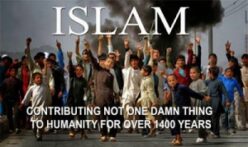The detached terms that the new censorship is hiding behind, like ‘fighting disinformation’, are Orwellian euphemisms. Speech isn’t a bodiless abstraction. Disinformation implies an objective source of information. Nobody fights disinformation, they silence some people and empower others. They create authorities over speech and use that authority to perpetuate their own power structures.
Source: How the Left is Banning Conservatives From the Internet – Frontpagemag





